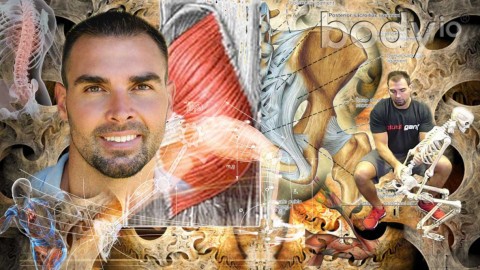ou’re told different types of self-care are the way to lower your stress, be healthy and live longer. Some of the things you think you’re doing to take care of yourself, your health-habits, may actually lead to greater illness!
Before I talk about one of those health habits, let me share some facts with you.
In 2012, the CDC estimated that 82% of people in the U.S. had contact with a healthcare professional. This percentage of adults generated 1.2 billion visits to healthcare providers, which is over 400 visits for every 100 people[1].
Were all those medical visits necessary?
Not all healthcare professionals think so. Over 25 years ago nearly half of doctors and over a third of nurses thought that 20% of patient visits were unnecessary[2]. The findings were similar in a 2008 study of primary care physicians, which revealed that many doctors believed they were delivering too much medical care[3]. Things like drug advertising (think Lunesta[4]) have helped to contribute to the growth in unnecessary physician visits[5].
Many physicians also believe that a significant percentage of diagnostic tests are unnecessary[6]. Diagnostic tests are not infallible and they carry the risk of false positives, which indicate the presence of disease where none exists. Take mammograms, for instance. The rate of false positives in the case of a single mammogram is typically low, but repeated annual mammograms raise the risk of a false positive. It is the same for cancer screening. In 2009, a study found that after 14 screenings the likelihood of false positives – possibility that the screening shows you have cancer when you actually don’t – increased to 50%[7].
The more diagnostic screenings you have, the greater your risk of being erroneously diagnosed with some illness or disease, and being treated for an illness you don’t have.
This brings up the issue of medical errors.
A 2011 study found that measurable medical errors cost over $17 billion annually[8]. The percentage of patients reporting medical errors is higher than most might think. In a 2002 study, as many as 42% of patients reported medical errors associated with their own care or the care of a family member[9]. Recent research investigating the effect of efforts to reduce medical errors found no change when comparing medical error rates over a number of years[10].
Habitual Healthcare Seeking
Healthcare seeking is a recognized health-related behavior[11], but the habitual seeking of medical care can be a problem[12,13]. One study estimated that frequent healthcare seekers can receive ten times more care (i.e., unnecessary care) than the general patient population[14], even though their illnesses are no more severe. It’s not that seeking medical care is inherently bad; it’s that when the frequent seeking of medical care becomes a habit, a behavior that one is not choosing consciously, the increased frequency means a higher risk of medical errors and diagnostic testing false positives leading to unnecessary and potentially harmful treatments.
The habit of seeking healthcare can be motivated by a person’s greater sensitivity to his or her physical state[15]. For example, one study found that frequent visits to the doctor were motivated by perceptions of more severe symptoms, greater concerns about illness, and a higher emotional response to the illness[16]. Having a heightened perception of illness symptoms and exhibiting illness behaviors are aspects of somatoform disorders[17] involving a variety of perceived physical symptoms with no basis, a strong psychological involvement with pain, or a fear of having a life-threatening illness[18].
The PATH of Medical Care Seeking
In my own research of the Patterns of Adapting to Health (PATH), one PATH, more than any of the others, could be characterized by the habit of medical care seeking. Adults with this PATH most often answer “strongly disagree” to the statement, “I only go to the doctor if I am very sick or injured.” Adults with the Healthcare Driven PATH are more likely to seek care for minor physical problems. These adults therefore generate more trips to the doctor, use more prescription medications, and demand more diagnostic tests. In one study, 49% of adults with the Healthcare Driven PATH experienced between four and seven different diagnostic tests in one year for things like bone density, cardiovascular stress, cholesterol, EKG, skin cancer, breast cancer, prostate cancer, and colorectal cancer. As I mentioned above, this high number of different diagnostic tests carries an increased risk of false positives. Prostate cancer screening based on the measure of prostate-specific antigens (PSA), for example, has been shown to indicate the presence of cancer, when it does not exist, in more than 1 in 10 men[19], leading to unnecessary treatment[20] and increased risk of long-term side effects like impotence and urinary incontinence[21].
Perhaps this is one reason why Healthcare Driven adults are prescribed medications at a much higher rate, and diagnosed with medical conditions at a higher rate, than adults in any other PATH – the erroneous diagnosis and treatment of false positives.
While this question must wait for future studies to answer definitively, what is clear is that habitual healthcare seeking, rather than promoting improved health and wellness, has the potential to harm it. There are times when healthcare seeking is necessary and essential, but the research is clear: too much of it can make you sick.
[expand title=”References (click to expand)”]
- Centers for Disease Control and Prevention [CDC]. Ambulatory Care Use and physician office visits [Fast Facts]. 2012 Dec. https://www.cdc.gov/nchs/fastats/physician-visits.htm
- Sihvonen, M. & Kekki, P. Unnecessary visits to health centres as perceived by the staff. Scandinavian Journal of Primary Health Care. 1990 Dec; 8(4), 233-239. https://www.ncbi.nlm.nih.gov/pubmed/2284523
- Hobson, K. Many Physicians Feel They’re Delivering Too Much Care. 2015 Mar 21. https://blogs.wsj.com/health/2011/09/26/many-physicians-feel-theyre-delivering-too-much-care/
- Lunesta commercials. https://www.youtube.com/results?search_query=lunesta+commercial
- Lizuka, T. & Zhe Jin, G. The Effect of Prescription Drug Advertising on Doctor Visits. Journal of Economics & Management Strategy. 2005 Sept; 14(3), 701–727. https://onlinelibrary.wiley.com/doi/10.1111/j.1530-9134.2005.00079.x/abstract;jsessionid=E389BE03E866B5829E41EF9925EA15A1.f01t02?deniedAccessCustomisedMessage=&userIsAuthenticated=false
- Georgetown University Medical Center. Millions Squandered In Unnecessary Tests Ordered In Routine Doctor Visits. 2006 May 19. https://www.sciencedaily.com/releases/2006/05/060519235403.htm
- Palmer, B. The Case Against the Annual Checkup. 2014; https://www.slate.com/articles/health_and_science/medical_examiner/2013/08/annual_checkups_going_to_the_doctor_when_you_re_not_sick_does_more_harm.html
- Van Den Bos, J., Rustagi, K., Gray, T., Halford, M., Ziemkiewicz, E., & Shreve, J. The $17.1 Billion Problem: The Annual Cost of Measurable Medical Errors. Health Affairs. 2011;30(4), 596-603.
- Blendon, R. J., DesRoches, C. M., Brodie, M., Benson, J. M., Rosen, A. B., Schneider, E., … & Steffenson, A. E. Views of Practicing Physicians and the Public on Medical Errors. New England Journal of Medicine. 2002;347(24), 1933-1940.
- Landrigan, C. P., Parry, G. J., Bones, C. B., Hackbarth, A. D., Goldmann, D. A., & Sharek, P. J. Temporal trends in rates of patient harm resulting from medical care. New England Journal of Medicine. 2010;363(22), 2124-2134.
- Ell, K., & Castaneda, I. Health Care Seeking Behavior. In Handbook of Immigrant Health. 1998; (pp. 125-143). Springer US.
- Jyväsjärvi, S., Keinänen-Kiukaanniemi, S., Väisänen, E., Larivaara, P., & Kivelä, S. Frequent attenders in a Finnish health centre: Morbidity and reasons for encounter. Scandinavian Journal of Primary Health Care. 1998; 16(3), 141-148.
- Kersnik, J., Švab, I., & Vegnuti, M. Frequent attenders in general practice: Quality of life, patient satisfaction, use of medical services and GP characteristics. Scandinavian Journal of Primary Health Care. 2001;19(3), 174-177.
- Demers, M. Frequent users of ambulatory health care in Quebec: the case of doctor-shoppers. CMAJ: Canadian Medical Association Journal = Journal De L’association Medicale Canadienne. 1995; 153(1), 37-42.
- Mortimer, M., & Ahlberg, G. To seek or not to seek? Care-seeking behaviour among people with low-back pain. Scandinavian Journal of Public Health. 2003;31(3), 194-203.
- Broadbent, E., Kydd, R., Sanders, D., & Vanderpyl, J. Unmet needs and treatment seeking in high users of mental health services: Role of illness perceptions. Australian and New Zealand Journal of Psychiatry. 2008; 42(2), 147-153.
- Rief, W., Nanke, A., Emmerich, J., Bender, A., & Zech, T. Causal illness attributions in somatoform disorders: associations with comorbidity and illness behavior. Journal of Psychosomatic research. 2004;57(4), 367-371.
- Rief, W., Nanke, A., Emmerich, J., Bender, A., & Zech, T. Causal illness attributions in somatoform disorders: associations with comorbidity and illness behavior. Journal of Psychosomatic research. 2004;57(4), 367-371.
- Chou, R., Croswell, J. M., Dana, T., Bougatsos, C., Blazina, I., Fu, R., … & Lin, K. Screening for Prostate Cancer: A Review of the Evidence for the US Preventive Services Task Force. Annals of Internal Medicine. 2001; 155(11), 762-771.
- Greene, K. L., Albertsen, P. C., Babaian, R. J., Carter, H. B., Gann, P. H., Han, M., … & Carroll, P. Prostate specific antigen best practice statement: 2009 update. The Journal of Urology. 2009; 182(5), 2232-2241.
- Mandal, A. Impotence after prostate cancer treatment. 2011 Sept 21. https://www.news-medical.net/news/20110921/Impotence-after-prostate-cancer-treatment.aspx
[/expand]












